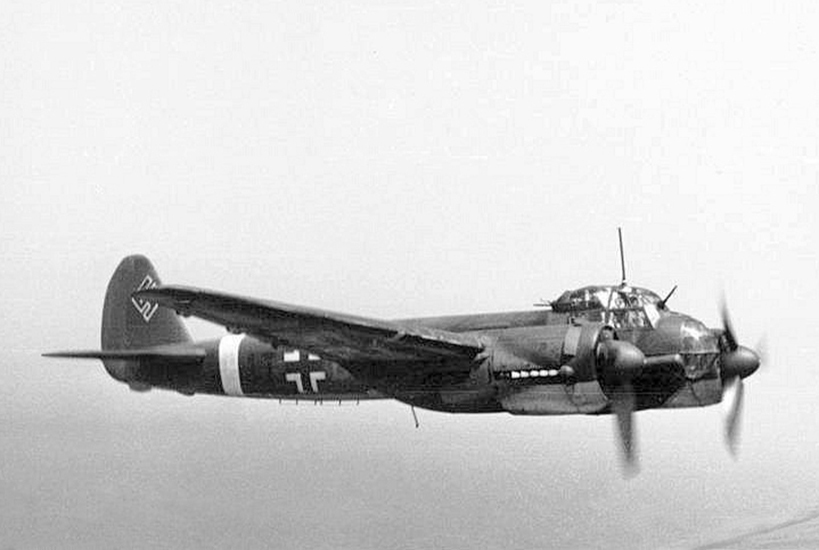Carbury, Brian John George
- Date of birth:
- February 27th, 1918 (Wellington, New Zealand)
- Date of death:
- July 31st, 1961 (Great Britain)
- Nationality:
- New Zealander (1907-1947, Dominion UK)
Biography
Service number 40288.
Brian Carbury, the son of a veterinary surgeon, was born in Wellington on February 27, 1918. The family later moved to Auckland where he attended Kingís College from 1932 to 1934, before becoming a shoe salesman at the Farmersí Trading Co., Auckland.
In 1937 Carbury went to England with the intention of joining the Royal Navy. However, when told that he was too old, he applied for a short service commission in the RAF and was accepted.
In June 1938, his flying training completed, Carbury joined No. 41 Squadron, flying Hawker Furies. In August 1939 he was attached to No. 603 Squadron, stationed at Turnhouse, near Edinburgh. This unit was part of the Auxiliary Air Force, whose members - both pilots and ground staff - were only part-time airmen, doing their service in the evenings, weekends and on a two week annual summer camp. Carburyís task was to assist with Spitfire training. As war approached No. 603 Squadron was organised for full-time service and Carburyís temporary attachment was made permanent in September.
On 16 October 1939, a section of No. 603 Squadron was scrambled and shot down a Junkers Ju-88 bomber into the sea east of Dalkeith, the first German aircraft to be shot down over British territory since 1918. Carbury probably destroyed an He 111 on 7 December and claimed a third share in the destruction of another during January 1940.
The next seven months were comparatively uneventful in Scotland and it was with some feeling of relief from the frustration of inactivity that 603 moved south to Manston on August 27 1940. Two days later Carbury shot down his first Bf 109, on the 30th another and on the 31st he destroyed two He 111ís and three more Bf 109ís. In one of these actions he was slightly wounded in the foot. With three more 109ís destroyed in September Carbury was awarded the DFC.
Successful actions against Bf 109ís continued in October. On the 2nd he destroyed one over the Thames Estuary and sent another one down south-east of London on the 7th. Three days later Carbury was leading his section when he saw twenty Bf 109ís on their way back to France. The three Spitfires attacked and Carbury shot down two of the enemy fighters, one going into the sea and the other crashing on the beach at Dunkirk. He damaged a Ju 88 on 14 October.
With his claimed destruction of fifteen enemy aircraft and another shared during the Battle, Carbury was among the five top-scoring pilots in RAF Fighter Command.
No. 603 Squadron returned to Scotland in December 1940.
Early in 1941 Carbury was posted to be an instructor and did not fly operationally again. It is believed that was due to the fact thas he had faced a court martial for bouncing cheques. It is also said that he was not prepared to serve overseas as he wouldn't leave his wife.
In 1949, he along with three others, in a trial at Princes Risborough Magistrates' Court, was found guilty of two offences relating to the illegal export of Bristol Beaufighters to Palestine. Each man was fined a total of £100 and Brian had his British pilot's licence suspended. Eventually he found work as a salesman for a heating and ventilation firm.
In 1961, he was diagnosed with terminal acute leukaemia and died soon thereafter in The War Memorial Hospital. His body was cremated at Breakspear crematorium in Ruislip. In Wellington, New Zealand, the town of his birth, a memorial was erected in his memory.
Promotions
August 37, 1940: Flying Officer
December, 1940: Flight Lieutenant
Do you have more information about this person? Inform us!
- Period:
- Second World War (1939-1945)
- Rank:
- Flying Officer
- Unit:
- No. 603 (City of Edinburgh), Royal Air Force
- Awarded on:
- September 24th, 1940
"During operations on the North East coast Flying Officer Carbury led his section in an attack on two enemy aircraft. Both were destroyed. From 28th August, 1940, to 2nd September, 1940, he has, with his squadron, been almost continuously engaged against large enemy raids over Kent, and has destroyed eight enemy aircraft. Five of these were shot down during three successive engagements in one day."
- Period:
- Second World War (1939-1945)
- Rank:
- Flying Officer
- Unit:
- No. 603 (City of Edinburgh), Royal Air Force
- Awarded on:
- October 25th, 1940
"Flying Officer Carbury has displayed outstanding gallantry and skill in engagements against the enemy. Previous to 8th September, 1940, this officer shot down eight enemy aircraft, and shared in the destruction of two others. Since that date he has destroyed two Messerschmitt 109-s and two Heinkel 113's, and, in company with other pilots of his squadron, also assisted in the destruction of yet another two enemy aircraft. His cool courage in the face of the enemy has been a splendid example to other pilots of his squadron."
Second DFC awarded as a bar for on the ribbon of the first DFC.
Sources
- - SHORES, CH. & WILLIAMS, C., Aces High, Grub Street, London, 1994.
- Ross, D., The Greatest Squadron of Them All- The Definite History of 603 Squadron- Volume I
- The London Gazette Issue 34951 published on the 24 September 1940
- The London Gazette Issue 34978 published on the 25 October 1940
- The South East Echo
- New Zealand Fighter Pilots Museum




